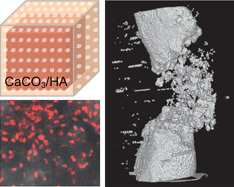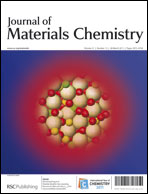Abstract
A series of porous CaCO3/HA composites have been produced with an increased molar percentage of HA from 0, 10, 25, 50, 75 to 100%. The compression strength of the CaCO3/HA composites increases proportionally before reaching 50% and gradually levels off with a further increase up to 100%. The 50% CaCO3/HA composite, with a similar compression strength to natural bone, has been evaluated in vitro and in vivo, showing great potential for osteoregenerative applications. A three-step chemical process for preparing the CaCO3/HA composites has been revealed by time-dependent


 Please wait while we load your content...
Please wait while we load your content...